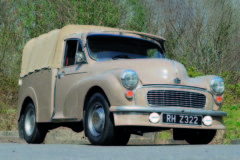1928 Aveling & Porter roller
Posted by Chris Graham on 31st May 2021
Paul Ritchie tells the tale of first-time engine owner Steve Vaughan, acquired and restored his 1928 Aveling & Porter roller.
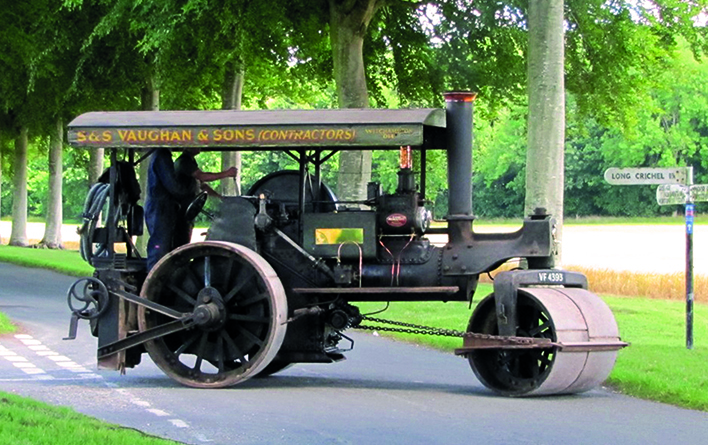
1928 Aveling & Porter roller: The engine negotiating the junction in a tree-lined avenue at Moor Crichel, Dorset.
Having spent many years owning and restoring vintage tractors, Steve Vaughan decided the time was right to take things to the next level, and start considering the prospect of owning a traction engine. His first move was to have a chat with nearby engine owner and fellow tractor enthusiast, Richard Pocock, who immediately put him on to boiler inspector, Dave Wothers.

The page from the Cheffins auction catalogue.
Dave turned out to be particularly helpful, given that he knew many of the engine owners as well as the machines that might be available, or likely to be coming up for sale in the future. He also had an encyclopaedic knowledge about the condition of all of the engines he’d worked on over the years.

The roller engaged on May Gurney & Company work, in Norwich; date unknown.
Steve was duly put in touch with Dave Coombes, of Clevedon, who was considering selling his roller – an Aveling & Porter Class C 4nhp single-cylinder, eight-ton model (No. 12205). Now, for most people, the desire to own an engine is fuelled by the prospect of all that fresh, new paintwork and shining brass but, when Steve saw Dave’s roller he was immediately smitten by its ‘working clothes’ appearance.

At Thursford, rotting slowly in the reserve collection.
The evident originality of so much of what could be seen, together with the competent and thorough work that had been undertaken to restore it, were big plus points as far as he was concerned. He even found the motor vehicle hub caps that had been fitted over the ends of the cylinder covers, an appealing feature! So, it wasn’t long before a deal was struck and the engine passed to Steve’s ownership.

The restoration’s under way at Universal Steam.
As a bonus, this particular engine actually has a very interesting history, and careful research by Sue Coates has helped bring some of this to life. It left Aveling & Porter’s Rochester works in October 1928, and headed – by rail – to Frinton-on-Sea, in Essex. It had been ordered by May Gurney & Company, of Trowse, Norwich. The order sheet records some of May Gurney’s ‘special’ requirements, including that ‘special attention be given to the painting, particularly to make a good job of it on awning sides.’ Perhaps paintwork on previous engines hadn’t been that good?

At the Cheffins auction, in September, 2020.
Other special requests of note included; ‘Bollard on the flywheel, extended drawbar and full-length wood top awning.’ The engine was registered with the Norwich plate, VF 4393.
It’s believed that the engine then stayed with May Gurney & Co until the late 1950s/early 1960s, when it was sold to George Cushing, who held it in the reserve collection at Thursford. It was entered in the Cheffins reserve collection auction as Lot 321 at Bushells Yard, Thursford, on 25th September, 2010, together with eight other Aveling & Porter rollers. Sadly, it appears that quite a few ‘odds and ends’ from engines went missing between the production of the catalogue, and the sale itself.

No. 12205 takes a striking pose – note the wheel hub caps over the cylinder covers.
On the day, bidding was tense and the rain poured down. The engine was bought for £15,000 by Dave and Sue Coates, who then had to arrange transport back to Clevedon (achieved with the help of Bedfordshire’s John Saunders, of the Saunders Collection). It was loaded on to a lorry the day after the auction, in two parts, as the smoke box had collapsed. It travelled to John’s yard, where he displayed it at the Stotfold Mill Working Weekend the following month – the engine’s first rally appearance!

No. 12205’s works plate.
By the winter of 2010, the engine was back at Dave Coates’ yard, and a thorough detailed inspection could be carried out. The boiler required a new barrel, repair work to the crown stays and throatplate and some other general work, but most of the readings from it were good. With the thorough assessment complete, the renovation work started with the removal of the many layers of oil that had been applied at Thursford. Thankfully, these coatings had preserved much of the original paintwork in a savable condition, which was good news.
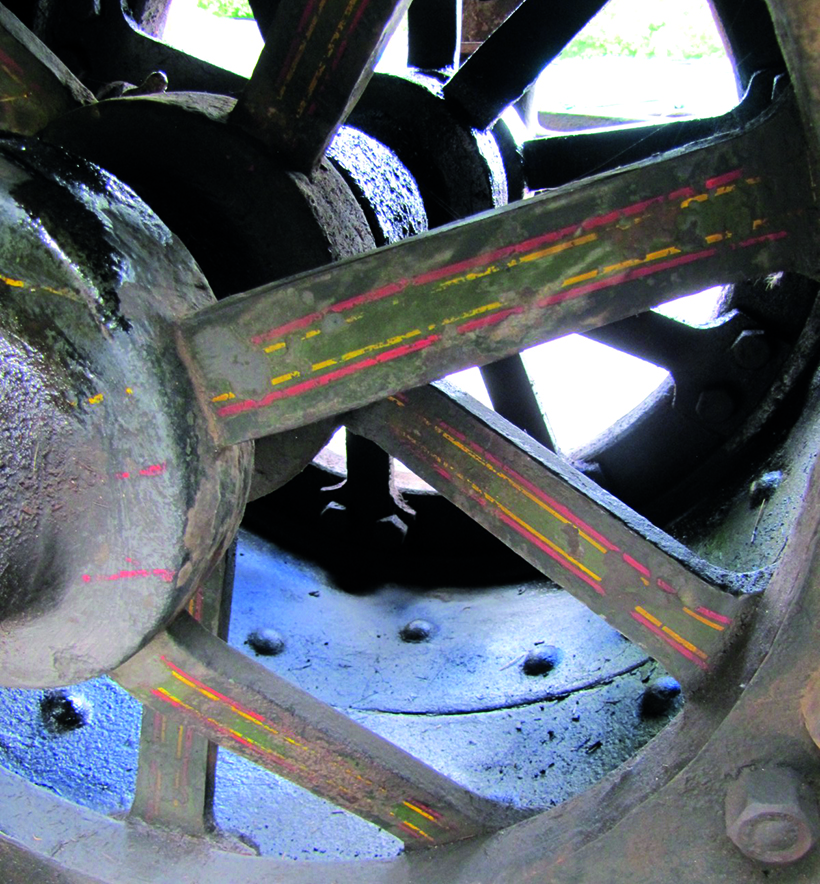
The original lining still apparent on the roll spokes.
By September, 2011, the roller was completely stripped and delivered to Universal Steam in Gloucestershire, where Jamie and Paul Cummings undertook the necessary repair work. It was also decided to have three of the main drive gears built-up, as they were showing visible signs of wear.
Almost 18 months later, and on a very cold, January day in 2013, a fire was lit for the very first time for over 50 years, and steam was gently raised. After the necessary checks had been successfully completed (including the safety valve settings), the engine was returned to Dave for rebuilding. There followed much hard work, including making a recast capstan. A new canopy roof was also built, using tongue and groove timber sourced – unusually – from Carol Vorderman, who Dave happened to be working for at the time! After the inevitable, last-minute rush, the roller passed its steam test on 14th June, 2013, and its first outing was on the following Saturday; Dave and Sue used the roller to take their daughter to her wedding.
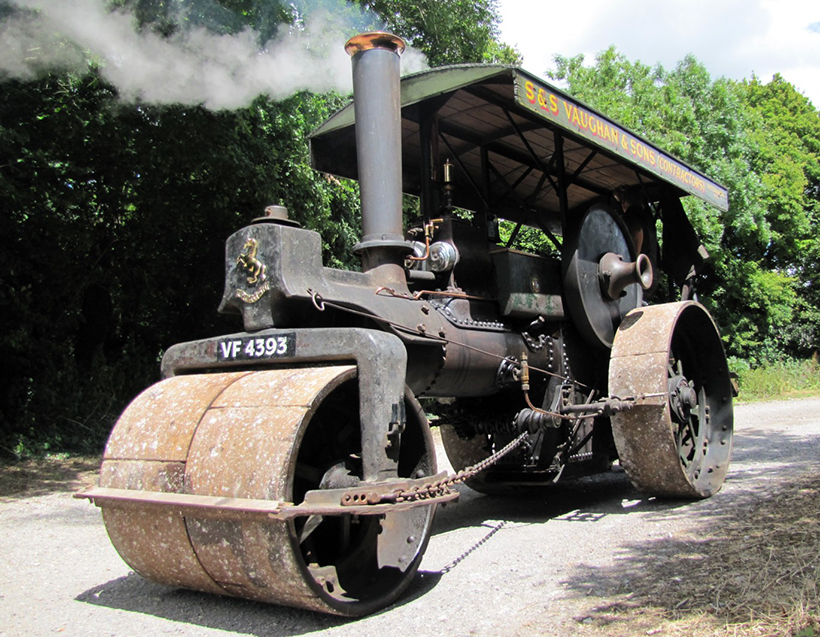
Heres a photograph showing the capstan on the fly wheel, which Steve would like to know more about.
Steve Vaughan purchased the engine from the Coates in June, 2017, collecting it at The Great Dorset Steam Fair, where they had the week together handing it over. He’s since steamed the engine locally at rallies in Dorset, and shown it at carnivals and on a number of road runs in the Wimborne area.
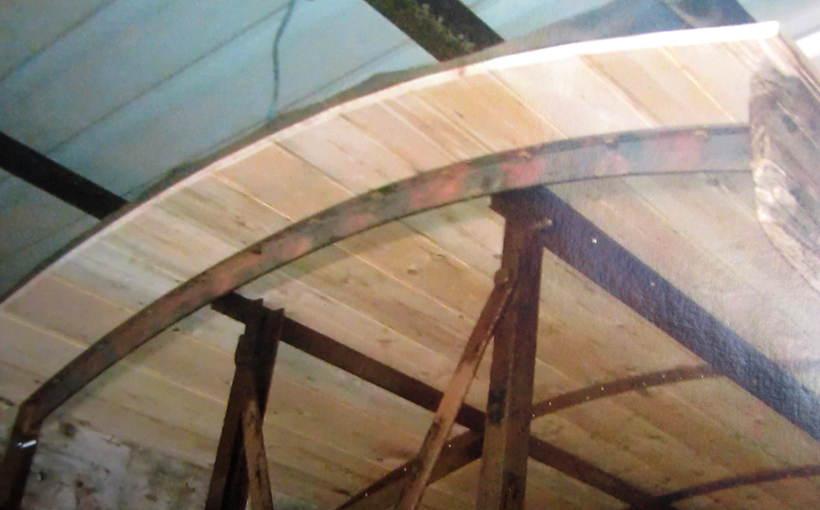
Carol Vorderman’s tongue and groove timber being used in the construction of the new canopy roof.
A recent job he commissioned during lockdown involved booking a local specialist to sympathetically sign-write the canopy panels, using a method that took six days to complete, and ensured a fittingly aged look. The details added include the version of his current home telephone number, before the modern, six-digit exchange numbers were introduced.

The exchanged motion panel in place, with the brass plaque attached that Steve is wanting to get recast, as per the original.
The roller is currently without its boiler cladding, and Steve’s considering the options of either reinstating the badly-worn original cladding, or making new. Either way, he hopes it’ll help with the water efficiency on road runs.
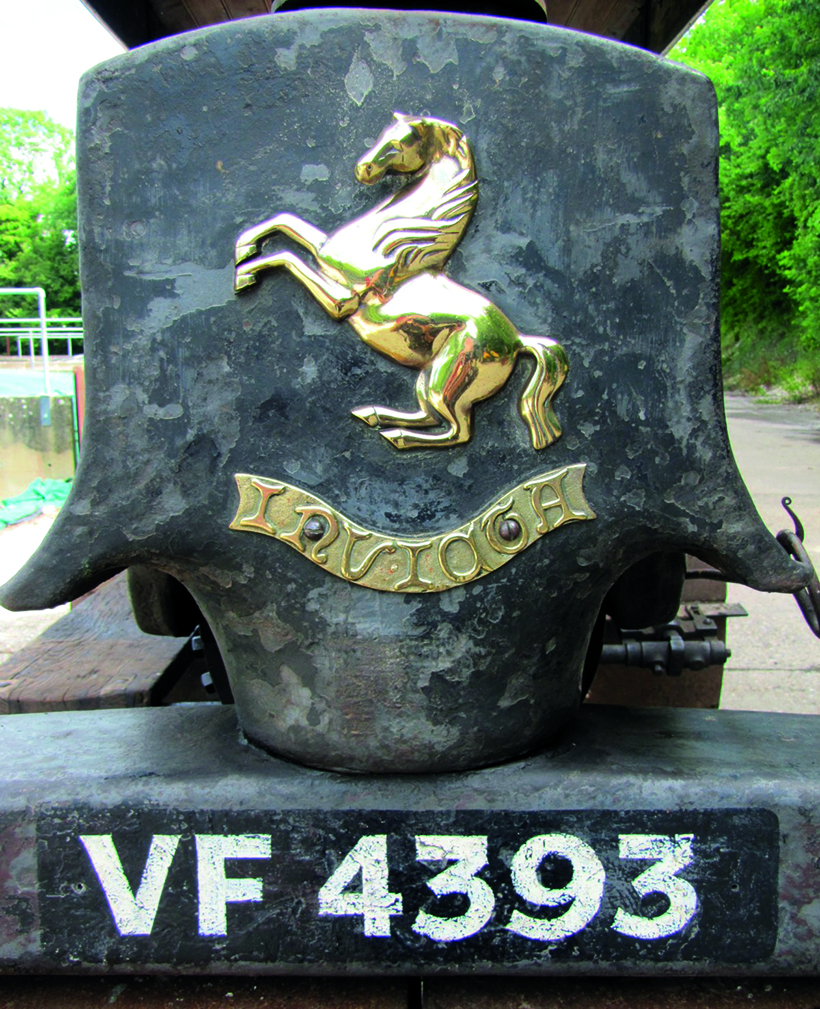
The original, ‘working clothes’ head stock. The newly-painted registration number was added at the same time at the canopy was done.
He’s also travelled to Norfolk, in the attempt to find out more information about the engine and its history. He discovered the Norwich library to be most helpful, and located the long-gone May Gurney works. Thursford, though, was closed, sadly, at the time of his visit, but Steve does think that the original brass plate from the motion panel is exhibited on a display wall there. He’s hopeful of finding somebody who will be able to replicate the plate for him so, if anyone reading this can assist, or happens to have any further information about this engine, or photographs of it (and the working of the capstan on the flywheel), Steve would be very interested to hear from you. He can be reached on: 07887 676177.

Ticking over gently on 26th August, 2017, at the GDSF. (Pic: Bob Moorman)

Seen at the 50th Great Dorset Steam Fair, looking very workman-like, and still without its lagging on. (Pic: Bob Moorman)
For a money-saving subscription to Old Glory magazine, simply click here.



